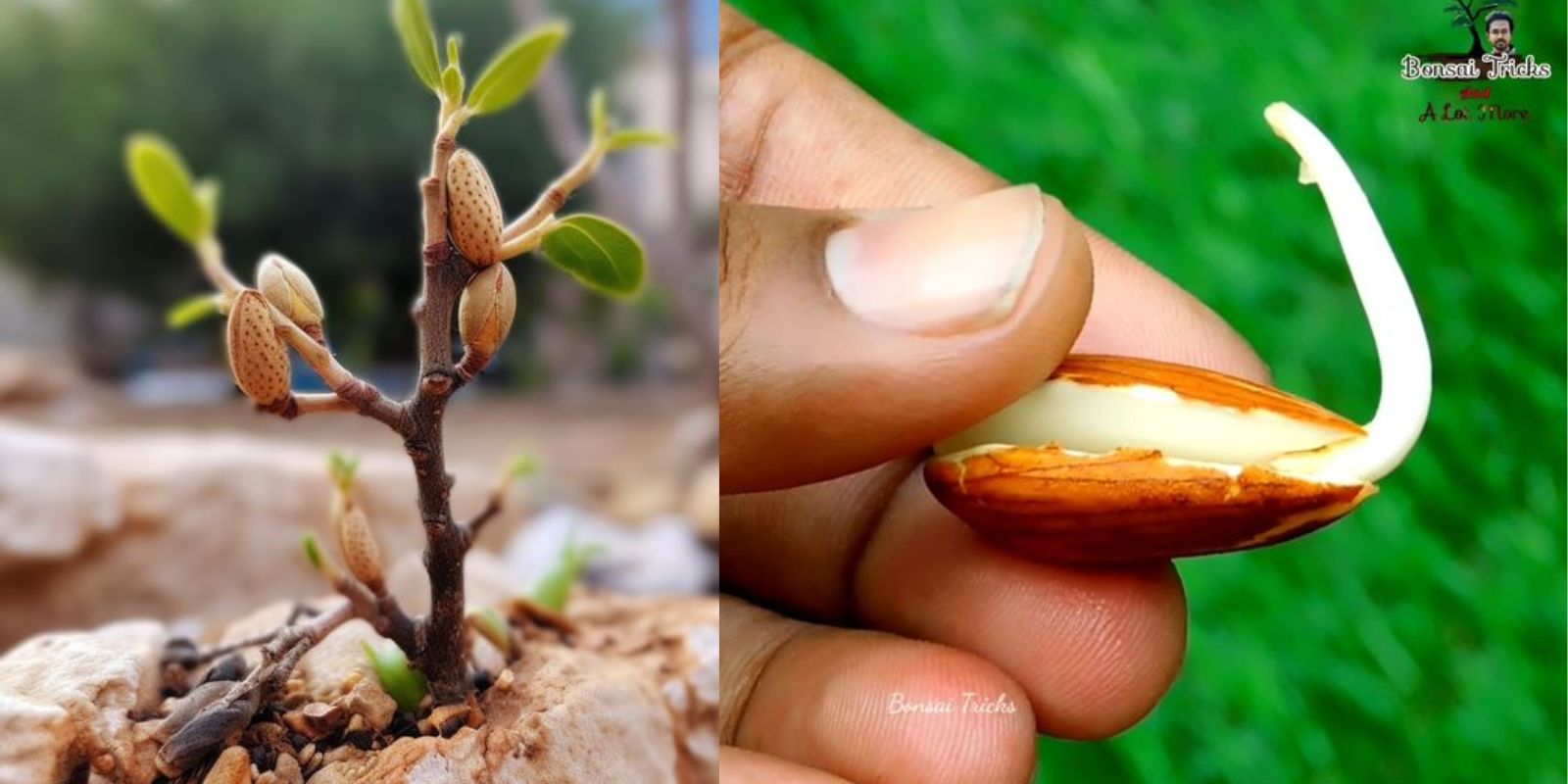Growing an almond tree from seeds at home is an exciting and gratifying venture that allows you to witness the entire lifecycle of this beautiful and productive tree. With its stunning blossoms and delicious nuts, an almond tree not only enhances your garden’s aesthetic but also provides a rewarding harvest. In this article, we will delve into the step-by-step process of growing an almond tree from seeds, ensuring you have all the information needed to successfully nurture this tree from a tiny seed to a flourishing plant.
Introduction
Almond trees (Prunus dulcis) are renowned for their striking blossoms, which typically bloom in early spring, and their nuts, which are used in a variety of culinary delights. Growing an almond tree from seed is a fantastic way to experience the entire growth cycle of the tree, from seed germination to fruit production. While the process requires patience and care, the rewards are well worth the effort. Whether you’re a seasoned gardener or a beginner, this guide will help you through each stage of growing an almond tree from seeds at home.
1. Selecting and Preparing Almond Seeds
Choosing Seeds:
- Fresh and Raw Seeds: To start, you’ll need fresh, raw almond seeds. It’s crucial to use unprocessed almonds that haven’t been roasted or salted, as these can inhibit germination. Look for seeds that are plump and free of any signs of mold or damage.
Preparing Seeds:
- Soaking: Soak the almond seeds in water for 24 hours before planting. This step helps to soften the seed coat and promote germination. Use a container with enough water to completely submerge the seeds. After soaking, drain and pat the seeds dry with a paper towel.
2. Cold Stratification
Why Stratification is Important:
- Mimicking Winter Conditions: Almond seeds require a period of cold stratification to break dormancy and trigger germination. Cold stratification mimics the natural winter conditions that seeds need to transition from dormancy to active growth.
How to Stratify Seeds:
- Preparation: Place the soaked almond seeds in a plastic bag filled with damp sand or peat moss. Seal the bag and store it in the refrigerator for 6-8 weeks. The cool, moist environment will help the seeds undergo the necessary physiological changes to prepare for germination.
3. Planting Almond Seeds
Choosing a Location:
- Site Selection: Almond trees require a sunny location with well-draining soil. They thrive in areas that receive full sunlight for at least 6-8 hours a day. Avoid planting in areas with heavy, clayey soil or where water tends to pool, as almond trees are prone to root rot.
Planting Procedure:
- Soil Preparation: Prepare a planting bed or container with well-draining soil. A mix of garden soil, sand, and compost works well. Ensure the soil is loose and free of large clumps to allow for proper root growth.
- Planting Depth: Plant the seeds about 1 inch deep in the soil. Space the seeds 4-6 inches apart if planting multiple seeds. Cover the seeds lightly with soil and water gently to settle them in.
4. Watering and Care
Watering Guidelines:
- Moisture Levels: Keep the soil consistently moist but not waterlogged. Overwatering can lead to root rot, while underwatering can hinder germination and seedling growth. A good practice is to water the soil when the top inch feels dry.
Sunlight and Temperature:
- Sunlight Requirements: Almond trees need plenty of sunlight to thrive. Ensure the planting location receives full sun exposure. If growing indoors, place the container in a sunny window or under grow lights.
- Temperature: Almond trees prefer temperatures between 60-75°F (15-24°C) during the growing season. Protect young seedlings from frost and extreme temperatures, as they can be sensitive to harsh conditions.
5. Growing and Transplanting
Seedling Care:
- Growth Monitoring: Once the seeds germinate, you will see small seedlings emerging from the soil. Continue to provide consistent moisture and sunlight to encourage healthy growth. Fertilize with a balanced, water-soluble fertilizer every 4-6 weeks during the growing season.
Transplanting:
- When to Transplant: When the seedlings have grown to about 6-12 inches tall and have developed a strong root system, they are ready to be transplanted. Choose a larger pot or prepare a spot in your garden with the same well-draining soil and sunny conditions.
- Transplanting Procedure: Gently remove the seedlings from their initial planting area and place them in the new location. Make sure the planting hole is large enough to accommodate the root system without bending or crowding the roots. Water thoroughly after transplanting to help the seedlings establish.
6. Caring for Mature Almond Trees
Ongoing Care:
- Pruning: Prune your almond tree annually to shape it and remove any dead or diseased branches. Pruning helps improve air circulation and encourages a more productive harvest.
- Pest and Disease Control: Monitor your almond tree for signs of pests such as aphids or diseases like powdery mildew. Implement organic pest control methods and keep the area around the tree clean to prevent problems.
- Harvesting: Almonds typically mature in late summer to early fall. The nuts are ready to harvest when the outer hull begins to split and the shells are hard. Harvest by shaking the tree or gently tapping the branches to release the nuts.
Conclusion
Growing an almond tree from seeds at home is a fulfilling journey that requires patience and dedication. From selecting and preparing seeds to caring for a mature tree, each step is crucial to ensuring a successful and bountiful harvest. The joy of nurturing a tiny seed into a thriving almond tree, with its beautiful blossoms and delicious nuts, is truly rewarding.
By following these steps and providing the right care, you’ll not only grow a stunning almond tree but also enjoy the satisfaction of harvesting fresh almonds from your very own garden. Embrace the challenge and let your almond tree become a testament to your gardening skills and commitment. Happy planting!

